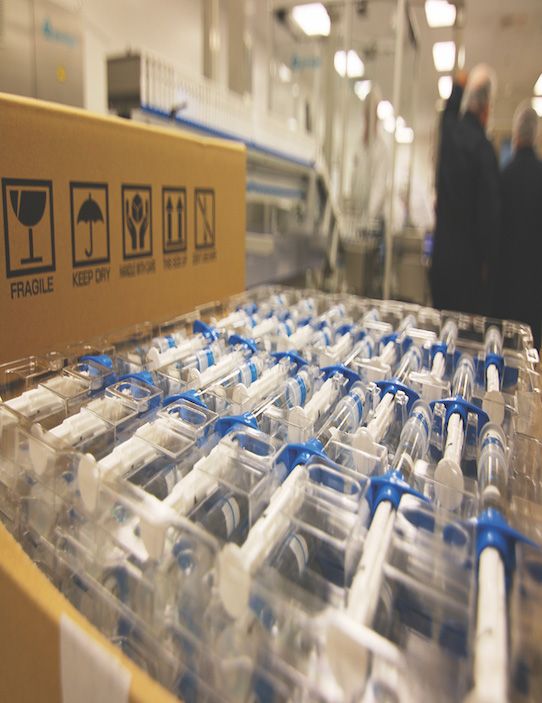Data logging is not enough for a modern pharma supply chain
IoT takes you from living in the past to shaping the future
For many years, pharma companies shipping temperature-sensitive products have relied on temperature loggers to monitor the condition of the drugs while in transit. These devices have become cheap, reliable and ubiquitous. But if your organization relies solely on these devices to monitor your cold chain, you are living in the past.
Loggers have a number of benefits—chief among them are cost and ease of use. Small, disposable and relatively inexpensive, they are easy to drop into a box. But loggers have two serious flaws: they aren’t very smart and they don’t communicate well. As a record-keeper, they provide retroactive data, and don’t allow you to react to problems when they occur. Furthermore, because the data they gather is so limited, they generally don’t help you answer two important questions—why did the temperature excursion happen, and how can you prevent it from happening again?
So if loggers are all about the past, how do you get a handle on the present, and better yet, the future?
The answer: IoT (Internet of Things) devices that provide real-time tracking and monitoring. An IoT device, like a cellular-connected tracker, can report in real time on the condition and location of your goods throughout the journey. If a temperature excursion occurs, you get an immediate update that allows your team to react—maybe by calling the carrier, maybe by expediting a new shipment. Better yet, a “smart” device that captures multiple variables can help your team identify the cause of the problem, allowing them to eliminate it and prevent costly inventory losses.
One European pharma company recently had this exact experience. Shortly after loading a container of temperature-controlled drugs on a ship, they received an alert from their real-time monitoring system that the container was set to the wrong temperature. They contacted the shipping company, who was able to correct the problem at the next port, saving the goods from crossing the Atlantic at the wrong temperature and becoming unsalable.
Even better, IoT-based systems are beginning to peer into the future to help you head off problems that haven’t occurred yet. A cloud-based system can analyze data from a tracker, incorporate other data streams (like weather and location, for example) and extrapolate that while your drugs are still in their approved zone, the temperature is rising, and will likely exceed the safe maximum before the goods arrive—BING goes an alert so you can intervene.
Sounds great, why isn’t everyone using these marvelous solutions? Cost and battery life.
Until recently, cellular hardware and data plans were optimized for streaming videos to your phone, not sending small packets of information periodically. Worse, the devices were power-hogs, often lasting no more than two or three weeks. The cost and duration of the trackers worked for rush shipments and super-high-value products (where trackers are in fact being used), but not for normal supply chain operations.
These are the changes that are making real-time tracking possible today. A new generation of devices has lower costs and batteries that last many months, and they are starting to show up in more and more pharma shipments. They are not replacing loggers, which still have the right cost to go in every box, but riding alongside in the pallet or container and ensuring that logistics managers can react quickly and understand what’s really going on in their supply chain.
Knowing if your goods had a temperature excursion continues to be critical for the pharma industry, but it’s at best half the story, and the less interesting half at that. If your organization is still relying solely on loggers to track cold chain products, check out some of the new always-connected solutions, and stop living in the past.
ABOUT THE AUTHOR

Rob Stevens is co-founder and chief revenue officer at Tive (Tive.co), provider of sensor-driven tracking solutions to deliver full visibility into products as they move through the supply chain.

Strategic Trends in Pharmaceutical Manufacturing for Industry Leaders
March 10th 2025This link in the pharma supply chain is undergoing a major transformation propelled by technological advancements, regulatory changes, and evolving market dynamics, requiring industry leaders to adopt innovative strategies in order to remain competitive.
The Digital Transformation Reshaping Hospitals and Medication Management
January 20th 2025Despite challenges surrounding communication overload, drug shortages, and cybersecurity risks, this term is revolutionizing medication management and patient care through the use artificial intelligence and predictive forecasting.